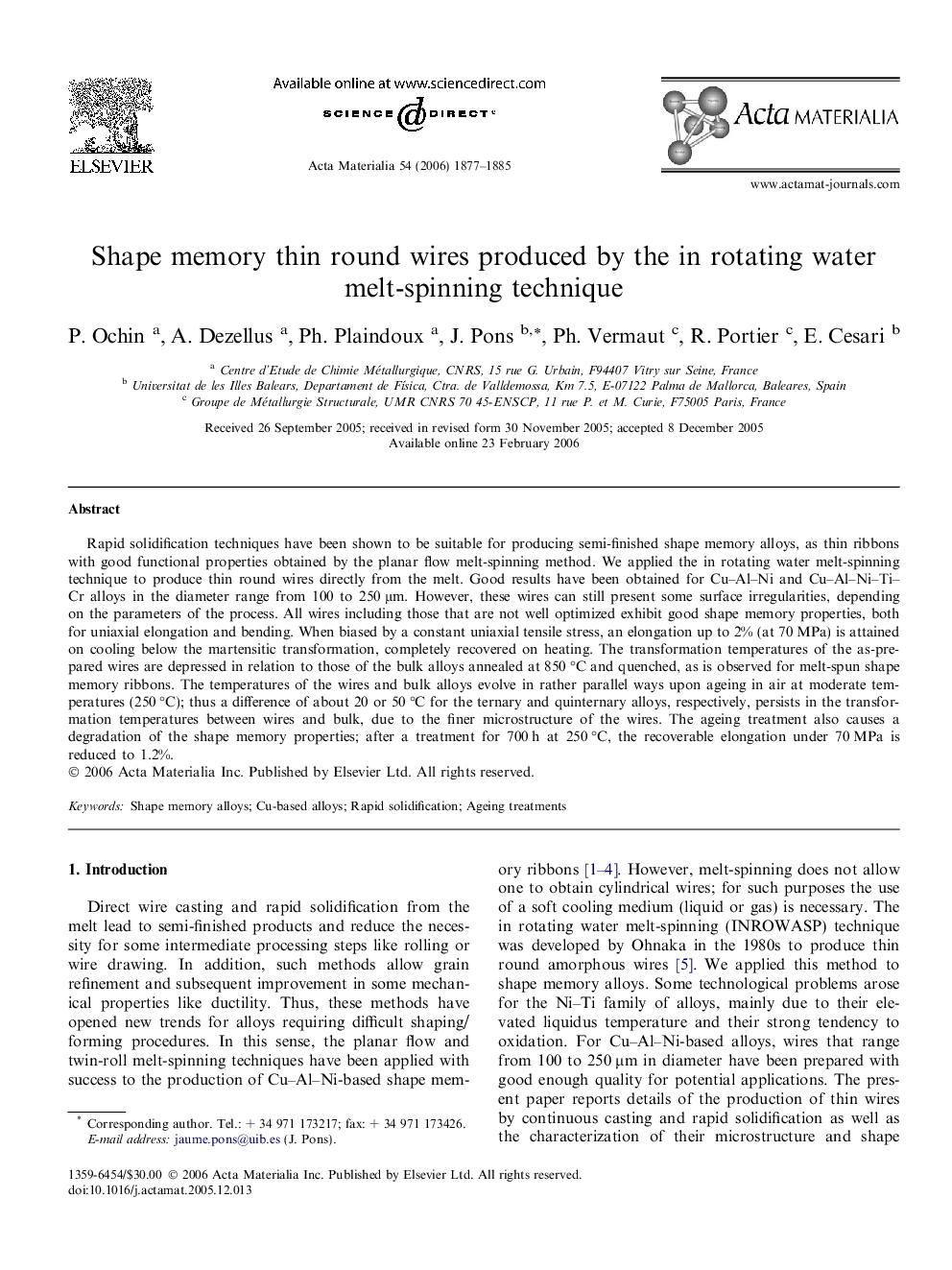| Article ID | Journal | Published Year | Pages | File Type |
|---|---|---|---|---|
| 10620914 | Acta Materialia | 2006 | 9 Pages |
Abstract
Rapid solidification techniques have been shown to be suitable for producing semi-finished shape memory alloys, as thin ribbons with good functional properties obtained by the planar flow melt-spinning method. We applied the in rotating water melt-spinning technique to produce thin round wires directly from the melt. Good results have been obtained for Cu-Al-Ni and Cu-Al-Ni-Ti-Cr alloys in the diameter range from 100 to 250 μm. However, these wires can still present some surface irregularities, depending on the parameters of the process. All wires including those that are not well optimized exhibit good shape memory properties, both for uniaxial elongation and bending. When biased by a constant uniaxial tensile stress, an elongation up to 2% (at 70 MPa) is attained on cooling below the martensitic transformation, completely recovered on heating. The transformation temperatures of the as-prepared wires are depressed in relation to those of the bulk alloys annealed at 850 °C and quenched, as is observed for melt-spun shape memory ribbons. The temperatures of the wires and bulk alloys evolve in rather parallel ways upon ageing in air at moderate temperatures (250 °C); thus a difference of about 20 or 50 °C for the ternary and quinternary alloys, respectively, persists in the transformation temperatures between wires and bulk, due to the finer microstructure of the wires. The ageing treatment also causes a degradation of the shape memory properties; after a treatment for 700 h at 250 °C, the recoverable elongation under 70 MPa is reduced to 1.2%.
Related Topics
Physical Sciences and Engineering
Materials Science
Ceramics and Composites
Authors
P. Ochin, A. Dezellus, Ph. Plaindoux, J. Pons, Ph. Vermaut, R. Portier, E. Cesari,
